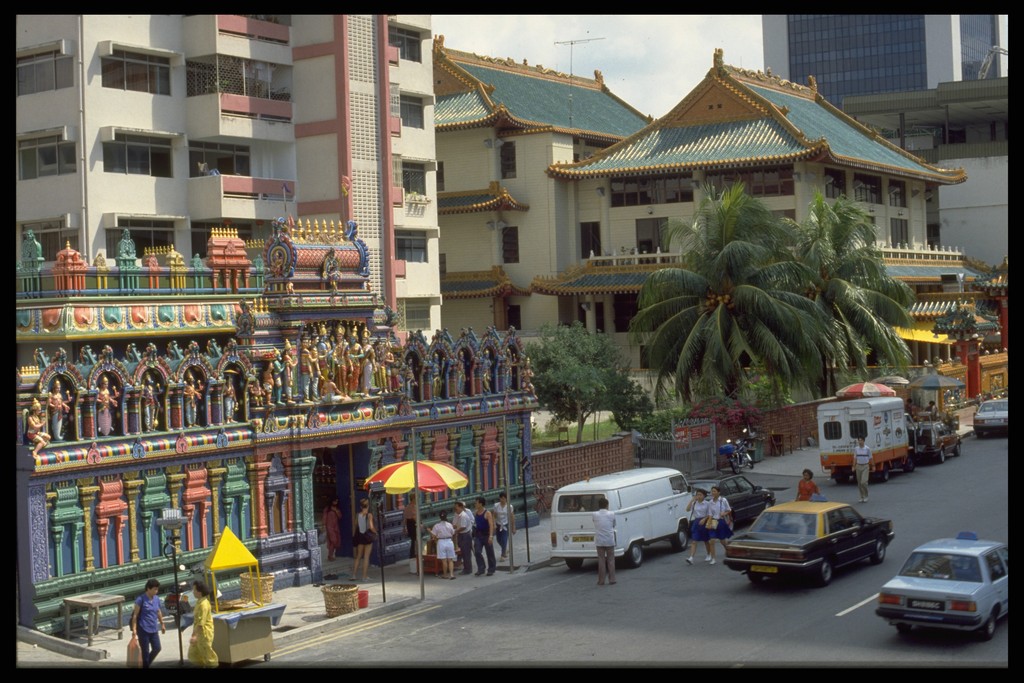中秋节
农历八月十五中秋节是一个以团圆为主题的日子,中秋节跟农历新年一样,是新加坡华人重视的节日。
中秋庆祝活动
从前中秋夜,新加坡华人家庭盛行“拜月光”。桌上有月饼、芋头、菱角、柚子、热茶等,孩子们兴高采烈地提灯笼在街上游行。孩子提的有纸灯笼,以及用竹枝和铁线制作骨架,贴上彩色透明玻璃纸的灯笼,造型以十二生肖为主。制作传统灯笼是本地正在消失的手工技艺。

柚子象征团圆,亦取“佑子”的好意头。怡保柚子香甜多汁,是新加坡人的最爱。将柚子皮整齐地剥开,用刀在皮上划几个通风口,放入小蜡烛,将绳子穿在柚子上,柚子灯笼便完成了。
随着市区重建,原来的乡村建立高楼,传统拜月光习俗也跟着流失,以亲朋好友欢聚来取代。
20世纪80年代,裕华园已经有大型的中秋灯饰。如今这类有组织性的中秋节活动在市区一带举行,方便更多国人及游客共度良辰美景,例如在滨海湾花园布置的大型灯组、传统会馆举办的中秋庆祝会、晚晴园为邻里主办的活动、牛车水亮灯等。

吃月饼的由来
中秋节和其它传统节日一样,是经过多年的发展才逐渐成形的。《周礼》记载“中秋”一词,那是古代帝王春祭日,秋祭月的礼制。《唐书·太宗记》记载“八月十五中秋节”,繁华盛世推广民间祭月的风俗。李商隐《嫦娥》名句“嫦娥应悔偷灵药,碧海青天夜夜心”,显然当时嫦娥奔月的传说版本是嫦娥犯错而受到惩罚。
中秋节吃月饼的由来说法不一,其中之一是农历八月十五晚,唐高祖李渊举圆饼邀月。唐朝开元鼎盛时期,唐玄宗和杨贵妃吃饼赏月,杨贵妃随口说出“月饼”二字,“月饼”就开始在民间流传开来。
另一说法是在元朝末年,明朝开国皇帝朱元璋准备于八月十五起义,将相关纸条藏在月饼里,传送给各地的起义军。中秋节这天,起义军势如破竹,最终推翻元朝。为了纪念起义胜利,中秋节吃月饼成为广泛流传的民间习俗。
直至20世纪70年代末,新加坡大坡1的大同、大中国、大东酒楼和南唐茶室的月饼很受欢迎。大东和南唐在中秋节前一个月停止早茶和午市业务,专门制作月饼供零售。当时的月饼馅料主要是莲蓉和咸蛋黄,但也有豆沙和五仁月饼,五仁指的是杏仁、核桃、花生、芝麻和瓜子。到了1980年代,新加坡经济欣欣向荣,制作月饼的商号多了起来,公众因此有更多选择。市场竞争下为了吸引客户,酒店、酒楼、餐馆开始参与月饼经济,各出奇招,推出精美的月饼礼盒。例如,有些酒楼推出“七星伴月”月饼礼盒,礼盒中间的月饼代表月亮,七个较小的月饼代表星星,围绕着中秋月。

现在月饼的品牌和口味众多,市面上有各种传统和冰皮月饼,还有榴梿月饼、红枣月饼、荔芋月饼、绿豆蓉月饼、黑芝麻月饼等,有些月饼还添加干贝、金华火腿和肉干等馅料来吸引年轻顾客。
随着人手短缺和工业成本上升,月饼制作走向大规模机械化生产,月饼工厂根据各商家的需求进行生产和包装,年产量数十万个。2虽然如此,手工制造的月饼依然得到大家的喜爱。如今,新加坡的一些老字号糕饼店仍然坚持自己制作“手工月饼”,并通过网店扩大客源。黄丝带新加坡也推动囚犯在樟宜监狱的面包制作厂内制造月饼,让改造中的服刑者也能贡献一己之力,回馈社会。3
华人礼俗委员会编,《华人礼俗节日手册》。新加坡:新加坡宗乡会馆联合总会,1989。 |










